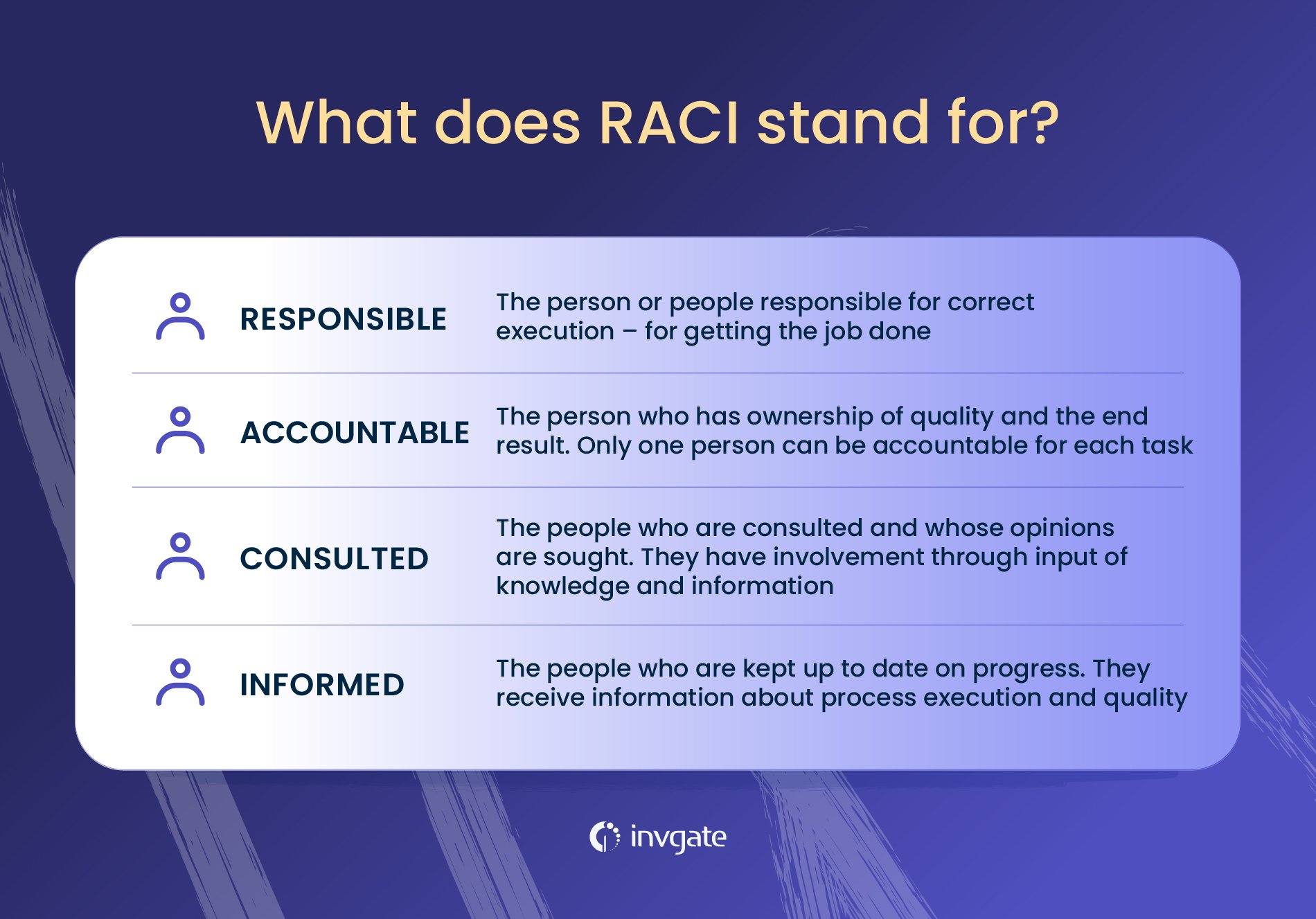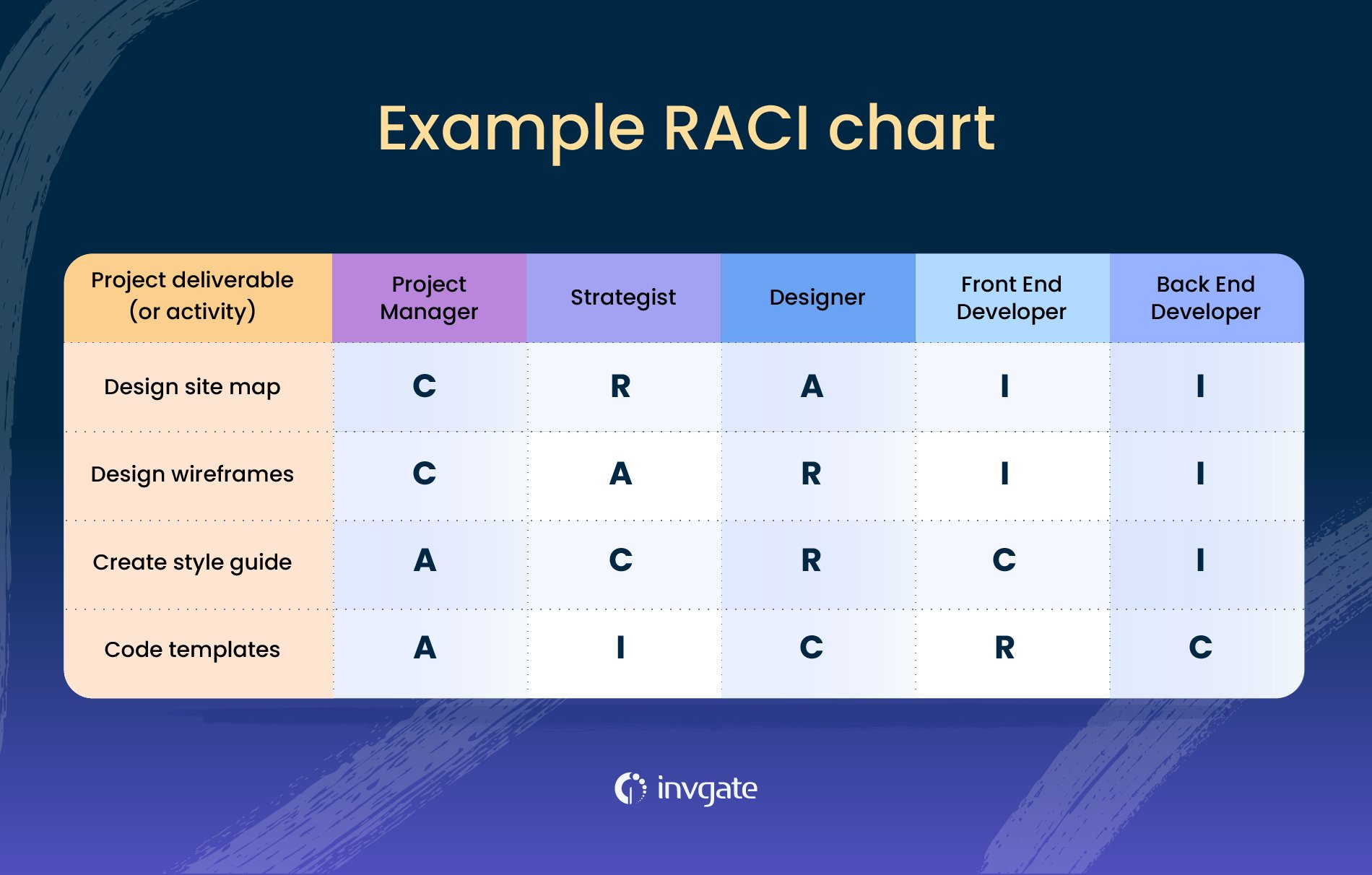Management is also often about accountability. Well, let’s scratch that, it’s always about accountability. And when it comes to IT Service Management (ITSM), that accountability goes double, because we’re dealing with processes that cover your entire organizational structure.
That’s when the RACI matrix comes in, an acronym that’s so fundamental that it’s covered by the ITIL Foundation Exam. Today, we’ll learn all about it, and why it can help with service design.
Accountability and responsibility are two big buzzwords that everyone appears to be fond of using. Yet, it seems that when it comes to designing ways to actually deliver on those, people come up short for answers. In truth, even the most well-developed organizations often have trouble delineating who is responsible for what. Just finding out who is a service owner can seem like a Herculean task.
Now, of course, you don’t want to let this happen to you under any circumstance. And that’s why you’re going to have to become a RACI matrix expert. In short, this means that you will have to document most of what you do in some way, shape, or form, and it’s all going to have to be within the template provided by this very matrix.
But don’t worry, once you get the hang of it, it becomes easier than you think. You’ll become great at putting everyone within their designated ITIL role, and keeping them coloring between the lines as much as possible.
Let’s take a look below, and hopefully, that’ll help make things clearer.
What is a RACI matrix?
RACI stands for Responsible, Accountable, Consulted, and Informed. The RACI matrix, therefore, outlines the “proper” way to design service management and ITSM. And it does this within the best practices outlined by ITIL.

How does it achieve this goal? By providing a clear line of accountability and responsibility within ITSM, meaning: knowing who does what, takes care of what, and is responsible for what. No more “Hey, I thought it was John or Jane that was taking care of that, my bad!”
The ITIL RACI Matrix is all about documenting the information that is required for due diligence within your organization. Meaning that the right hand should always know what the left is doing, and vice-versa.
- Responsible means the person who is in charge of getting a certain task done.
- Accountable means that only that person takes the heat or glory for how well that task is completed. It’s their baby, and theirs alone.
- Consulted entails the people whose opinions will be requested and sought. They provide input, knowledge, and information. They’re the ones who help steer things towards ultimate success.
- Informed is about the hierarchical structure — the people who are kept in the loop regarding progress. These are the people the process owner will be reporting information about process quality and execution to.
But isn’t your organization already awesome at the whole ITIL process map? Is your IT staff already an old hand at all the ins and outs of service management?
Well, tough luck, because it’s very likely that whatever they’re doing, they can do much better if they stick to the simple guidelines of the RACI matrix. And this brings us squarely to our next topic.
Why use the RACI matrix at all?
The RACI matrix is already in the service operation part of ITIL. Therefore, if your organization is already ITIL compliant, it shouldn’t be much of a stretch to say that you’re already implementing it in some form.
Or are you? Because it also wouldn’t be a stretch to say that many organizations—sometimes through no real fault of their own—have a very low level of maturity in ITIL. Compound that with the fact that everyone seems to be using their own organizational lingo and terminology, and you’ve got yourself a real Tower of Babel scenario on your hands.
Therefore, the RACI matrix is the perfect solution for achieving clarity. It means that every job role is mapped out consistently. And also it means that you know who does what because instead of relying on name tags, you’re relying on assigned job roles that clearly spell out what everyone does and the range of their professional capabilities and responsibilities.
Yet, operating within this framework isn’t as cut-and-dried as it sounds either. If you ask two people in your IT department what they do, there will inevitably be overlaps and inconsistencies. In addition, people might find it bothersome to be prodded and asked about responsibility and accountability like they’re being accused of something.
But it’s not all as bleak as it sounds. If you educate them on the importance of the RACI model and its many benefits for efficiency, the quality-of-life improvements that it provides, then the picture can slowly change for the better. After all, it’s not that people don’t want to comply, but rather don’t tend to get on board with things they don’t understand.
It can also mean:
- Taking away responsibility from people who want it, and vice-versa.
- Having tough talks about task ownership.
- Removing the control of some tasks from people who think they should have it.
But in the end, it’s worth it because it eliminates confusion, and that’s a noble goal in and of itself.
The RACI matrix and ITSM
In our definitive guide to ITSM, we borrowed a handy definition from the ITIL 2011 glossary:
“The implementation and management of quality IT services that meet the needs of the business. IT service management is performed by IT service providers through an appropriate mix of people, process, and information technology.”
With the shifting focus in the new 2019 ITIL version to service management rather than “simple” ITSM, things have evolved. And nothing spells service management more than the simple acronym of the RACI matrix.
The idea is to provide what’s called an “authority matrix,” which is used within organizations to provide a clear framework for who does what. It helps outline clear roles, processes, tasks, and boundaries. Therefore, it comprises an agile, and concise method of assigning and tracking each project task within the RACI model. Of course, the crux of the matter is also being able to see ownership clearly, and you will.
When using the RACI model there’s only one person responsible for each task. Therefore, each activity has a defined, set scope of applicability. Now, this doesn’t mean that it’s an all-or-nothing deal; several people may have responsibility for executing different parts of a task. But, accountability is still assigned to a single person.
How come? In the RACI model, accountability is end-to-end within the framework/matrix. While many can collaborate, responsibility is ultimately the purview of each individual who’s assigned to a task.
The important thing when using the RACI matrix is to not leave any process or activity to chance. When you utilize a framework of this type, you should know who owns what and who is doing what. Remember: responsible, accountable, consulted (people whose knowledge can be relied on), and informed (authorities to keep in the loop).
The RACI model also works whenever a service is exchanged from one provider to the other. Therefore, these models should be designed in the lifecycle stage and tested and deployed during service transition. When it’s time for service operation, people will perform according to the roles designed within the RACI matrix.
In essence, this type of system “just” requires that you know your process inside and out. That includes all related activities and roles within a certain process.
RACI matrix example: How to implement it?
Now it’s time to get down to business. How exactly does one go about implementing a RACI matrix in one’s business or organization?
First, it comes down to assigning tasks and responsibilities. Like this:
- Tasks: the activities that need to be done. For instance, incident management, reviews, etc.
- Responsibility: who is accountable for the task being finalized in due course and within the established parameters for success?

Then, you’re ready to actually get started. Once the tasks and roles are ready to go, you should:
- Conduct meetings with stakeholders to assign RACI codes (as per our chart).
- Take note to identify gaps, overlaps, or oversights. If there are redundancies, then it’s time to see whether they’re absolutely necessary or whether they could be better served by having a single person as the stakeholder.
- Hand over the chart to everyone and wait for the corresponding feedback.
- Then, it’s time to make sure that everyone’s allocations are followed to the letter.
And that’s it! Everyone lives happily ever after within the confines of the RACI model. Or not, actually. What happens with the possible challenges to this model? Or is it absolutely airtight and sacrosanct?
You can bet it isn’t. Let’s take a look.
Possible challenges with implementation
- To start with, your RACI matrix may not be completely sound. You may require a few brainstorming, back-and-forth sessions before it’s ready for primetime.
- Then, make sure that just one person is accountable for each process. Otherwise, it’s the old game of “He said, she said” all over again. And you definitely don’t want that.
- Another issue is when authority or responsibility is delegated without the necessary authority. Make sure that everyone stays within their lane.
- Focus on roles. And the reason why is that if you focus on departments, then accountability becomes diffuse, which is a complete waste of the whole RACI matrix process.
- When processes are very closely related, you may have cases of overlapping responsibilities. Configuration management, asset management, incident management, and problem management are frequently some of these “problem areas.” Change management, and release and deployment management also fall within this category. When you combine responsibilities too much you may invalidate the system of checks and balances that keeps the whole thing afloat. Plus, when some staff members are performing a combined role, this may overload them completely, leading to a host of other problems.
- This is also something to note when combining functions, especially with conflicting agendas or goals.
Now, you’ll also want to perform role analysis and activity analysis. With role analysis, it’s as easy as asking: are duties segregated correctly? Do we have responsibilities that are assigned and divided correctly? Do we have any big bottlenecks that we need to be thinking about?
With activity analysis, it’s about thinking about whether there are enough activities and roles per row of the chart. Do we have enough consultants for each role, or too few? Are we offering enough communication channels to keep things clear, open, and flowing in the right direction?
And even more so, you’ll need to understand the difference between formalized roles/departments (like a service desk), and the smaller roles between that division that employees are expected to perform. To make things even clearer: a service desk manager is not a service desk, just like a service desk agent is not a service desk.
We hope that’s clarified the confusion a bit.
Final thoughts
Applying a RACI matrix is easier said than done. But the outline, the general framework is there to lead you towards success. The idea is to have clear, defined roles and activities in your organization. That way, you’ll avoid confusion and have everyone pulling their weight. And what’s more, you’ll have them pulling in the right direction, which is forward.
A company that knows who performs what tasks is more efficient, streamlined, and ready for action than one that isn’t. And using the RACI model is an easy, ITIL-compliant way to plan ahead, get everybody to roll up their sleeves, and get moving with no excuses.
If they’re still deferring responsibility after, then you know your roles aren’t clearly defined. Think ahead, and apply RACI accordingly.














.jpg?upsize=true&upscale=true&width=780&height=205&name=ITIL%20Foundation%20Exam%20(2).jpg)
